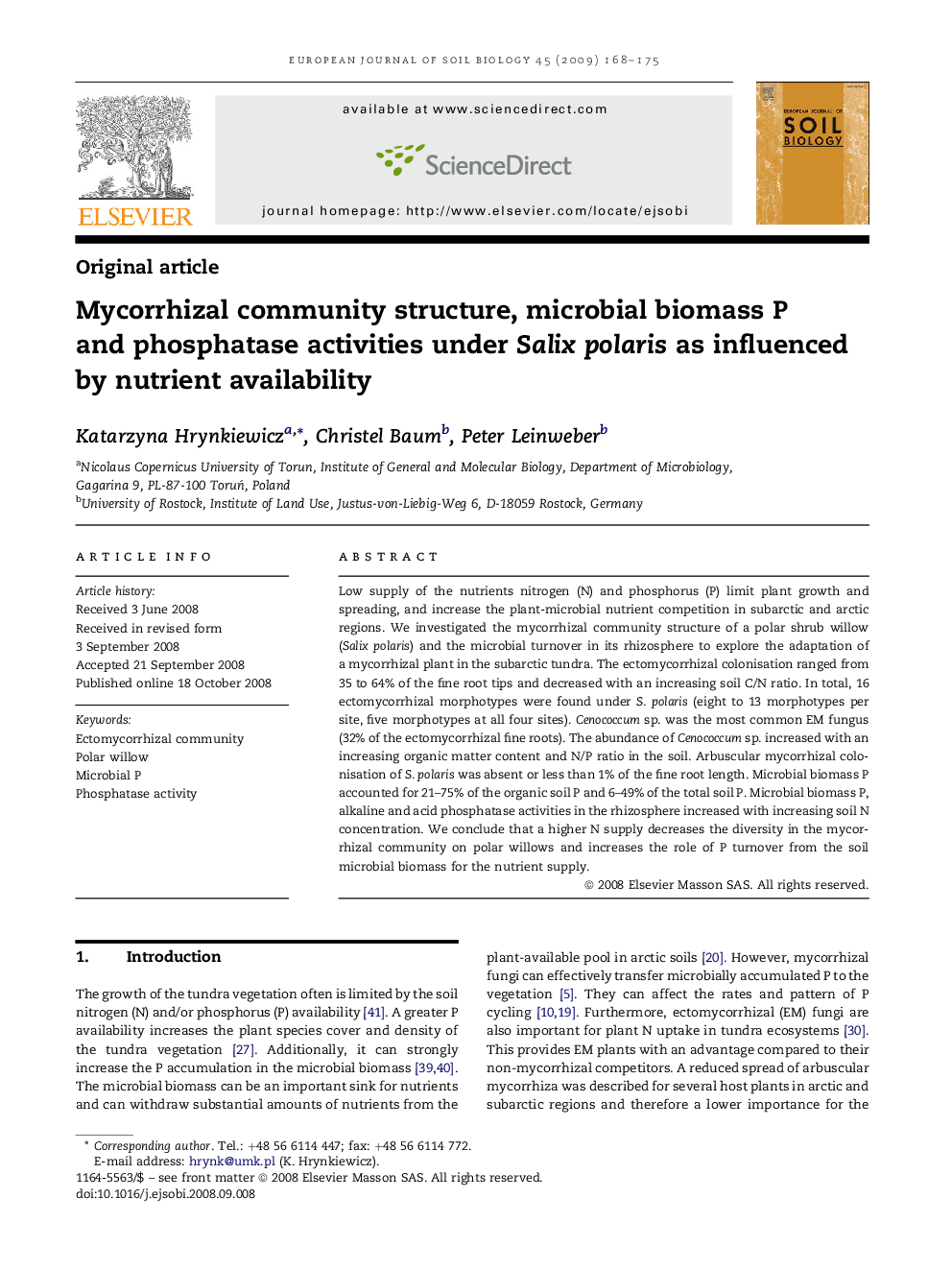| Article ID | Journal | Published Year | Pages | File Type |
|---|---|---|---|---|
| 4392230 | European Journal of Soil Biology | 2009 | 8 Pages |
Low supply of the nutrients nitrogen (N) and phosphorus (P) limit plant growth and spreading, and increase the plant-microbial nutrient competition in subarctic and arctic regions. We investigated the mycorrhizal community structure of a polar shrub willow (Salix polaris) and the microbial turnover in its rhizosphere to explore the adaptation of a mycorrhizal plant in the subarctic tundra. The ectomycorrhizal colonisation ranged from 35 to 64% of the fine root tips and decreased with an increasing soil C/N ratio. In total, 16 ectomycorrhizal morphotypes were found under S. polaris (eight to 13 morphotypes per site, five morphotypes at all four sites). Cenococcum sp. was the most common EM fungus (32% of the ectomycorrhizal fine roots). The abundance of Cenococcum sp. increased with an increasing organic matter content and N/P ratio in the soil. Arbuscular mycorrhizal colonisation of S. polaris was absent or less than 1% of the fine root length. Microbial biomass P accounted for 21–75% of the organic soil P and 6–49% of the total soil P. Microbial biomass P, alkaline and acid phosphatase activities in the rhizosphere increased with increasing soil N concentration. We conclude that a higher N supply decreases the diversity in the mycorrhizal community on polar willows and increases the role of P turnover from the soil microbial biomass for the nutrient supply.
